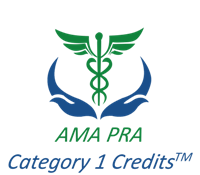
Biography
Biography: Shireen Qureshi
Abstract
Stroke continues to have a major impact on the public health of our nation. Preventing stroke is a key to reducing its societal burden from a human and financial perspective. WHO deemed stroke as second leading cause of morbidity and mortality. Stroke (ischemic and hemorrhagic) constitutes 7% of all deaths annually in North America and Western Europe. In Saudi Arabia, accurate estimate is lacking, however, based on an older provincial population-based survey, the estimate is 30/100,000 and about one every 6 minutes. Stroke prevention is being transformed from a personal style or belief into evidence-based medicine. Ischemic stroke constitute about 70-80% of all strokes and is not a single disease; it is a system of diverse etiologies and pathogenic mechanisms. Although epidemiological realities are distressing, major advances in secondary stroke prevention and to a lesser extent, in primary prevention, has been elucidated. Despite the fact that the largely artificial distinction of primary and secondary prevention has become elusive, with the multitude of risk factors added together in different individual poses similar risk, hence, equally aggressive non-pharmacological and pharmacological intervention. Considerable research has led to a better delineation of risk factors, as well as an expanded understanding of pathophysiological subtypes. Atherosclerosis of the brain and heart vessels plays a predominant pathological role. Large artery atherosclerosis leads to hypo perfusion or atherogenic emboli, whereas micro atheroma and lipohyalinosis of small penetrating vessels cause lacunar infarcts. Approximately 20% of ischemic strokes are due to cardio embolism, commonly due to atrial fibrillation of up to 45%. 30% are cryptogenic and less than 5% due to a variety of unusual causes. Stroke research has evolved over the past decade elaborating that; different subtypes of stroke respond differently to specific interventions for stroke prevention of which cardio embolic strokes bear a big toll.

